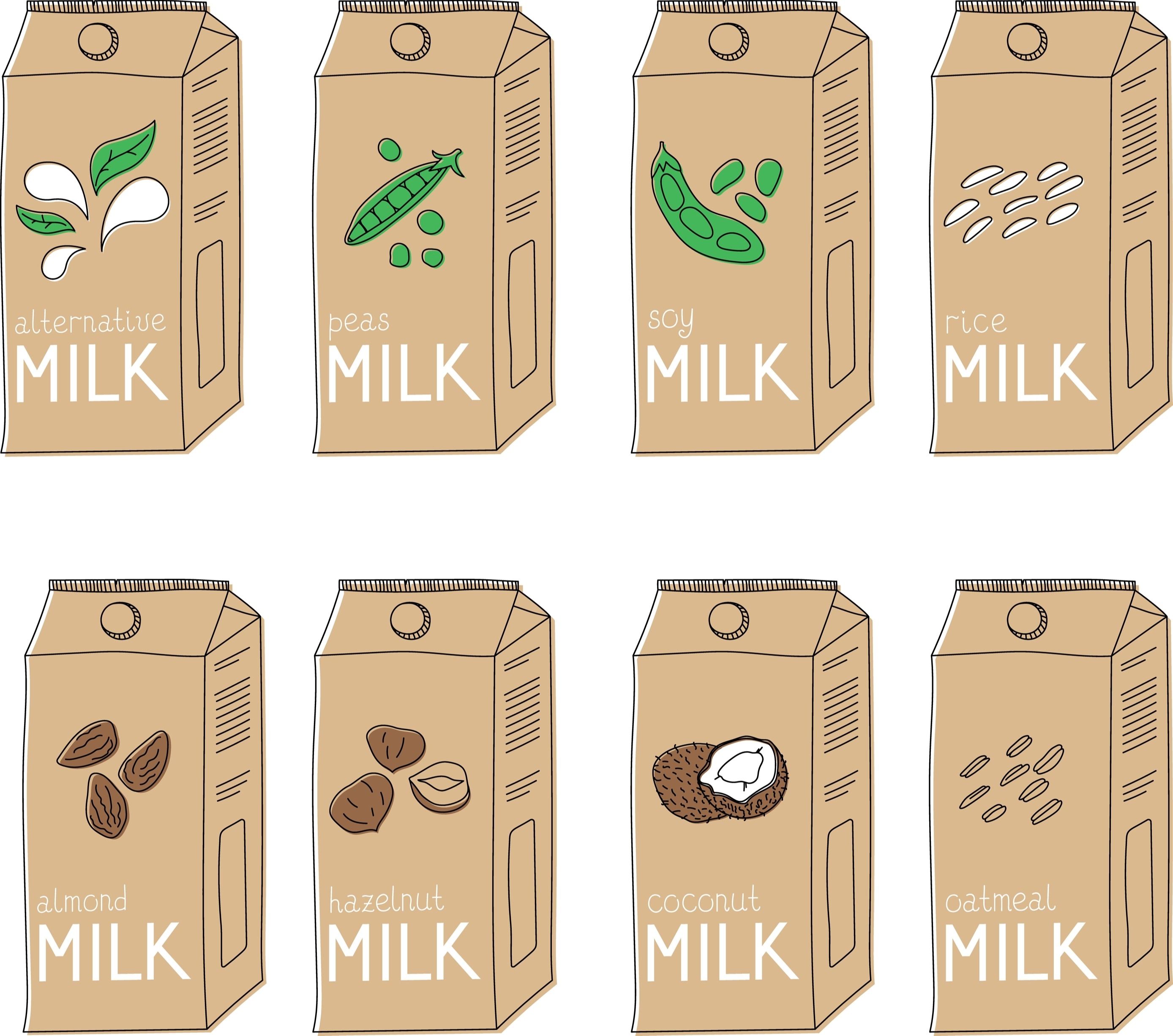Help! There are so many milk alternatives.
Which one should I give my child?
By Hilary Stempel, MD, MPH

Help! There are so many milk alternatives.
Which one should I give my child?
A friend told me recently that he’d bought half a dozen types of different milks. His toddler had stomach issues with cow’s milk so he tried soy milk, oat milk, and almond milk.
Then he bought rice milk, hemp milk, and macadamia nut milk.
His toddler refused all of them.
With so many milk alternatives (and so little fridge space), he wasn’t sure what to do.
I know lots of parents can relate. The market for milk alternatives is booming. Yet, this doesn’t always mean that they fit into a healthy diet for your toddler. Once children turn a year old they no longer need formula. However, toddlers from age 1-2 years still need more fat and protein than older children to support their brain and body development.
So...which milk should kids be drinking?
Cows milk: first choice of pediatricians.
Whole fat cow’s milk is the preferred milk option to feed toddlers from 12 months to 24 months. But beware parents, many toddlers love cow’s milk–and there is such a thing as too much. Too much cow’s milk can cause problems like constipation or anemia (low red blood cell count).
If you give your toddler cow’s milk, serve it at mealtimes, in a cup–and give water at other times of the day. Toddlers should only drink 16 to a maximum of 24 ounces of milk a day.
Milk is only meant to supplement the diet. It’s an easy way for toddlers to get healthy fats, proteins, calcium, and vitamin D. But, if your toddler doesn’t like cow’s milk, or you prefer not to feed them animal products, there are other ways they can get these nutrients from solid foods. Some milk alternatives can also be an option.
Rice, almond, oat. Oh my. Here’s how pediatricians rank other milks.
There are plenty of milk alternatives, and they can be categorized based on their main ingredients: soy, nuts, grains, and plants. My main advice is to read labels and look for options that are most similar to the fat, protein, calcium, and vitamin D levels as in cow's milk. These are options if your child has lactose-intolerance or you prefer a vegan diet.
Soy milk:
Pediatricians typically recommend soy milk as the primary alternative to cow’s milk. This is because soy milk is most similar to cow’s milk in the fat, protein, and vitamins included. Look for a soy milk that’s unsweetened and fortified with calcium and vitamin D.
Nut milks:
Options here include almond milk, macadamia nut milk, and even cashew milk. To make “milk” from nuts, the nuts are soaked in water, ground, strained and combined with ingredients to create a smooth and thick texture. With this process, the amount of nuts and nutrients in the milk-product is often limited. Look at the labels and you’ll see these often have less fat, protein, and no vitamin B12 compared to cow's milk or soy milk.
Grain milks:
Many of us may like oat milk in our coffee but this might not be the best primary option for young toddlers. Grain milks include oat milk, hemp milk, flaxseed, and rice milk. These alternative milks are naturally lactose-free and tolerated by kids who have soy allergies. But again, they generally have less protein and fat compared to cow's milk or soy milk.
Plant milks:
Pea milk is a newer milk alternative and is nut-free, soy-free, lactose-free, gluten-free, and vegan. Unsweetened pea milk is more similar to whole fat cow’s milk in protein and fat and is fortified with calcium and vitamin D. Coconut milk is another plant-based milk. The nutritional content varies widely by brands and it usually does not have adequate protein.
Bottom Line:
Currently, the recommended milk options for your toddler aged 1-2 years old are whole fat cow’s milk or soy milk. Remember, the amount of milk your child drinks matters! Limit any milk to 18-24 ounces a day so your toddler will have room for a variety of healthy and nutritious foods.
When buying plant-based milk alternatives, it’s important to read labels for protein, fat, and ensure the drink is fortified with calcium and vitamin D.
When your child is older than 2 year, their fat needs decrease and it’s ok to add in milk alternatives that fit with your family’s preferences.
Pro Tips for Teeth!
- To keep your child’s teeth healthy and prevent cavities, toddlers should learn to drink their milk from a cup and not a bottle.
- Give milk with meals and never give a bottle of milk in bed.
- When you’re only giving milk with meals, this limits kids from sipping on milk, and keeping sugar on the teeth throughout the day.
About Bright by Text
Kids don't come with instructions. That's why Bright by Text sends the info parents need most for raising little ones, from pregnancy through age 8. To join our village and get our free messages based on your child’s exact age and where you live, simply text BRIGHT to 274 448 or click here. Don’t forget to follow us on Facebook and Instagram. You’ve got this, parents!

Sign up now to receive FREE text tips - Based on your child's EXACT AGE right now!